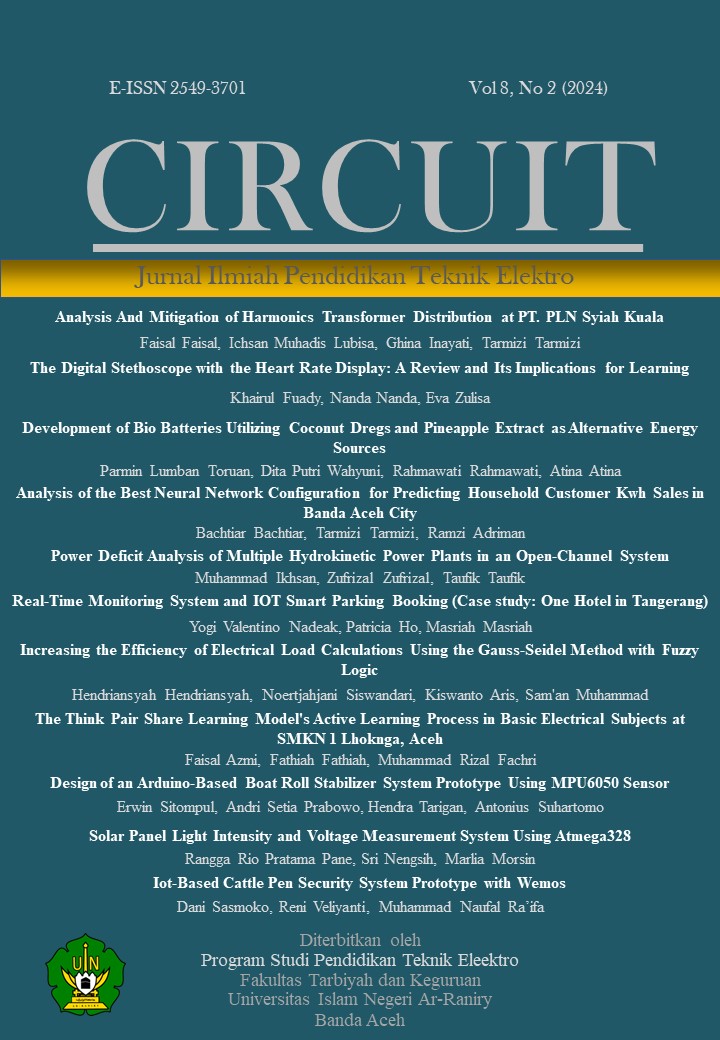Power Deficit Analysis of Multiple Hydrokinetic Power Plants in an Open-Channel System
DOI:
https://doi.org/10.22373/crc.v8i2.22091Abstract
The electricity generation capacity of hydrokinetic power plants can be enhanced by paralleling multiple plants simultaneously. This study focuses on the longitudinal configuration of multiple hydrokinetic turbines installed in a water channel. The energy production rate of downstream turbines is lower than that of upstream turbines when placed close to each other. This observed phenomenon, related to the wake effect, has resulted in reduced flow velocity. In this research, a power deficit technique is employed as an alternative to the velocity deficit strategy. By estimating the open flow characteristic, or k*, this method aims to predict the downstream power input at any given time. Without directly measuring water velocity, power can be predicted using the power deficit model. A hybrid model combining the Bastankhah Porté-Agel model and the Geometry-Based model has been utilized in this study. The analysis results indicate that the power deficit and velocity deficit values differ by an average of 1.3% and 0.15%, respectively.
Downloads
Published
Issue
Section
License
Authors who publish in CIRCUIT: Jurnal Ilmiah Pendidikan Teknik Elektro agree to the following terms:
- Authors retain copyright and grant the journal right of first publication with the work licensed under a Creative Commons Attribution-ShareAlike 4.0 International License (CC BY-SA 4.0) that allows others to share and adapt the work with an acknowledgement of the authorship and initial publication in this journal
- Authors are able to enter into separate, additional contractual arrangements for the non-exclusive distribution of the journal's published version of the work (e.g., post it to an institutional repository or publish it in a book), with an acknowledgment of its initial publication in this journal.
- Authors are permitted and encouraged to post their work online (e.g., in institutional repositories or on their website) prior to and during the submission process, as it can lead to productive exchanges, as well as earlier and greater citation of published work. (See The Effect of Open Acces)

